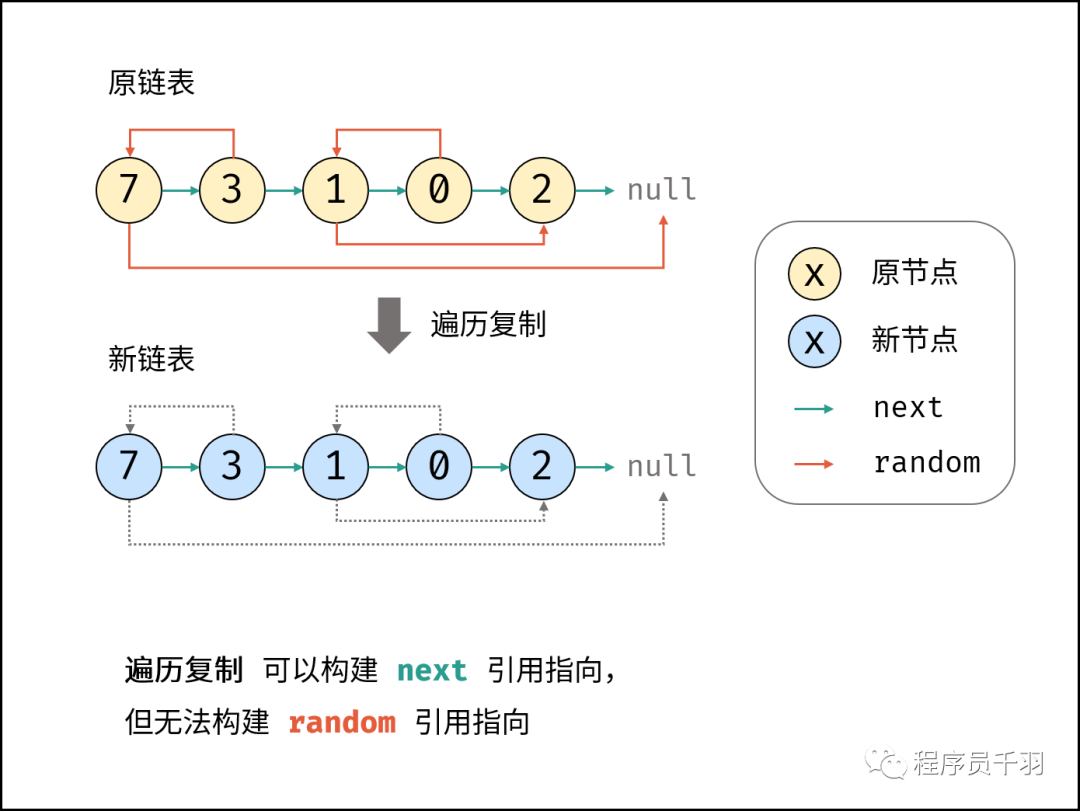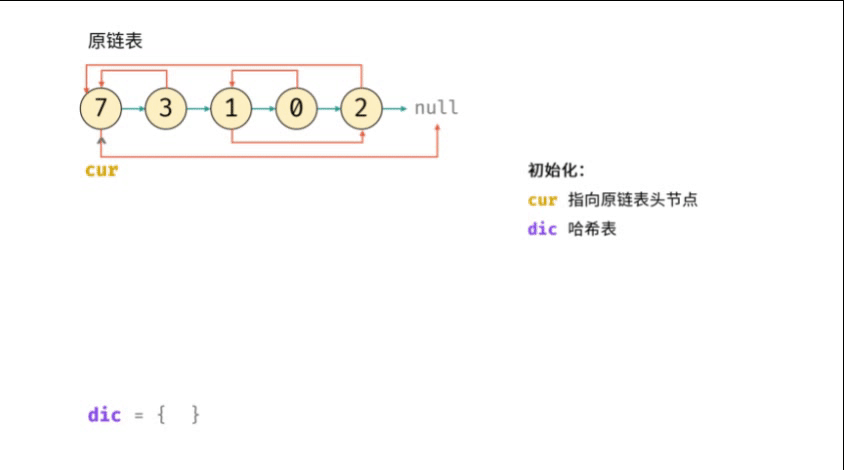
Knock algorithm series articles
- Ten classic sorting algorithms for dry goods and hand tearing
- Sword finger offer | understanding interview
- Sword finger offer | interview question 2: realizing Singleton mode
- Sword finger offer | interview question 3: finding two-dimensional array
- Sword finger offer | interview question 4: replace spaces
- Sword finger offer | interview question 5: print linked list from end to end
- Jianzhi offer | interview question 6: Rebuilding binary tree
- Sword finger offer | interview question 7: realizing queue with two stacks
- Sword finger offer | interview question 8: minimum number of rotation array
- Sword finger offer | interview question 9: Fibonacci sequence
- Sword finger offer | interview question 10: frog jumping steps
- Sword finger offer | interview question 11: matrix coverage
- Sword finger offer | interview question 12: the number of 1 in binary
- Sword finger offer | interview question 13: integer power of value
- Sword finger offer | interview question 14: print from 1 to the maximum n digits
- Sword finger offer | interview question 15: delete the node of the linked list
- Sword finger offer | interview question 16: put the odd number in the array before the even number
- Sword finger offer | interview question 17: the penultimate node in the lin k ed list
- Sword finger offer | interview question 18: reverse linked list
- Sword finger offer | interview question 19: merge two ordered linked lists
- Sword finger offer | interview question 20: judge whether binary tree A contains subtree B
- Sword finger offer | interview question 21: mirror image of binary tree
- Sword finger offer | interview question 22: print matrix clockwise
- Sword finger offer | interview question 23: stack containing min function
- Sword finger offer | interview question 24: Press in and pop-up sequence of stack
- Sword finger offer | interview question 25: print binary tree from top to bottom
- Interview question 26: post order traversal sequence of binary search tree
- Sword finger offer | interview question 27: paths with a certain value in a binary tree
"Leetcode : https://leetcode-cn.com/problems/fu-za-lian-biao-de-fu-zhi-lcof
"GitHub : https://gitee.com/nateshao/leetcode/blob/main/algo-notes/src/main/java/com/nateshao/sword_offer/topic_28_copyRandomList/Solution.java
Sword finger Offer 28 Replication of complex linked list
Title Description: please implement the copyRandomList function to copy a complex linked list. In a complex linked list, each node has a next pointer to the next node and a random pointer to any node or null in the linked list.
Difficulty: medium
Example 1:

Input: head = [[7,null],[13,0],[11,4],[10,2],[1,0]] Output:[[7,null],[13,0],[11,4],[10,2],[1,0]]
Example 2:

Input: head = [[1,1],[2,1]] Output:[[1,1],[2,1]]
Example 3:

Input: head = [[3,null],[3,0],[3,null]] Output:[[3,null],[3,0],[3,null]]
Example 4:
Input: head = [] Output:[] Explanation: the given linked list is null (null pointer), so it returns null.
Tips:
- 10000 <= Node.val <= 10000
- Node.random is empty (null) or points to a node in the linked list.
- The number of nodes shall not exceed 1000.

Method: hash table
"Using the query characteristics of the hash table, consider building the key value pair mapping relationship between the original linked list node and the corresponding node of the new linked list, and then traverse the next and random reference points of each node of the new linked list.
Algorithm flow:
- If the header node head is empty, null is returned directly;
- Initialization: hash table dic, node cur points to the header node;
- Copy linked list:
- Create a new node and add key value pairs to dic (original cur node, new cur node);
- cur traverses to the next node in the original linked list;
- The reference to build a new linked list points to:
- Build the next and random bow of the new node, and point to it;
- cur traverses to the next node in the original linked list;
- Return value: the header node dic[cur] of the new linked list;
Complexity analysis:
- Time complexity O(N): traverse the linked list in two rounds, using O(N) time.
- Space complexity 0(N): hash table dic uses extra space of linear size.

package com.nateshao.sword_offer.topic_28_copyRandomList;
import java.util.HashMap;
import java.util.Map;
/**
* @date Created by Shao Tongjie on 2021/12/2 14:05
* @WeChat official account programmers
* @Personal website www.nateshao.com cn
* @Blog https://nateshao.gitee.io
* @GitHub https://github.com/nateshao
* @Gitee https://gitee.com/nateshao
* Description: Replication of complex linked list
*/
public class Solution {
/**
* Selected answers
* @param head
* @return
*/
public Node copyRandomList(Node head) {
if(head == null) return null;
Node cur = head;
Map<Node, Node> map = new HashMap<>();
// 3. Copy each node and create a Map mapping of "original node - > new node"
while(cur != null) {
map.put(cur, new Node(cur.val));
cur = cur.next;
}
cur = head;
// 4. Build the next and random points of the new linked list
while(cur != null) {
map.get(cur).next = map.get(cur.next);
map.get(cur).random = map.get(cur.random);
cur = cur.next;
}
// 5. Return the header node of the new linked list
return map.get(head);
}
/**
* Idea: first copy the next node of the linked list, connect the copied node to the original node, and then copy other nodes
* Node, and finally take the node with even position (copied node).
*
* @param head
* @return
*/
public Node copyRandomList2(Node head) {
if (head == null) return null;
Node node = new Node(head.val);
Node temp = node;
while (head.next != null) {
temp.next = new Node(head.next.val);
if (head.random != null) {
temp.random = new Node(head.random.val);
}
head = head.next;
temp = temp.next;
}
return head;
}
// Definition for a Node.
class Node {
int val;
Node next;
Node random;
public Node(int val) {
this.val = val;
this.next = null;
this.random = null;
}
}
}
Reference link: https://leetcode-cn.com/problems/fu-za-lian-biao-de-fu-zhi-lcof/solution/jian-zhi-offer-35-fu-za-lian-biao-de-fu-zhi-ha-xi-